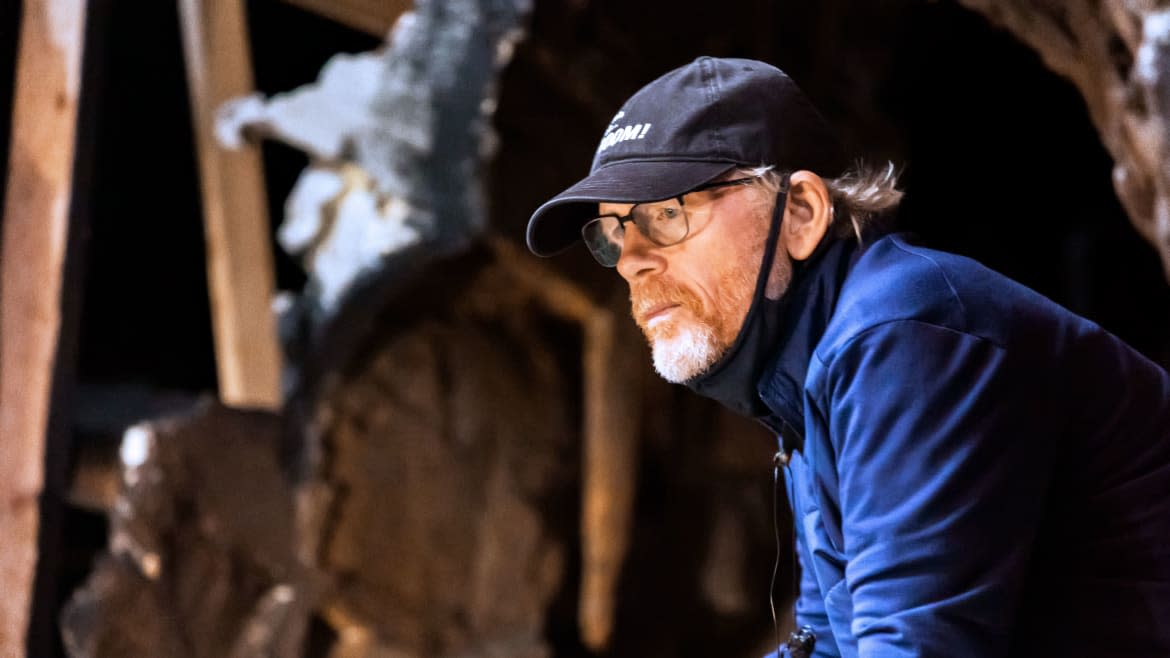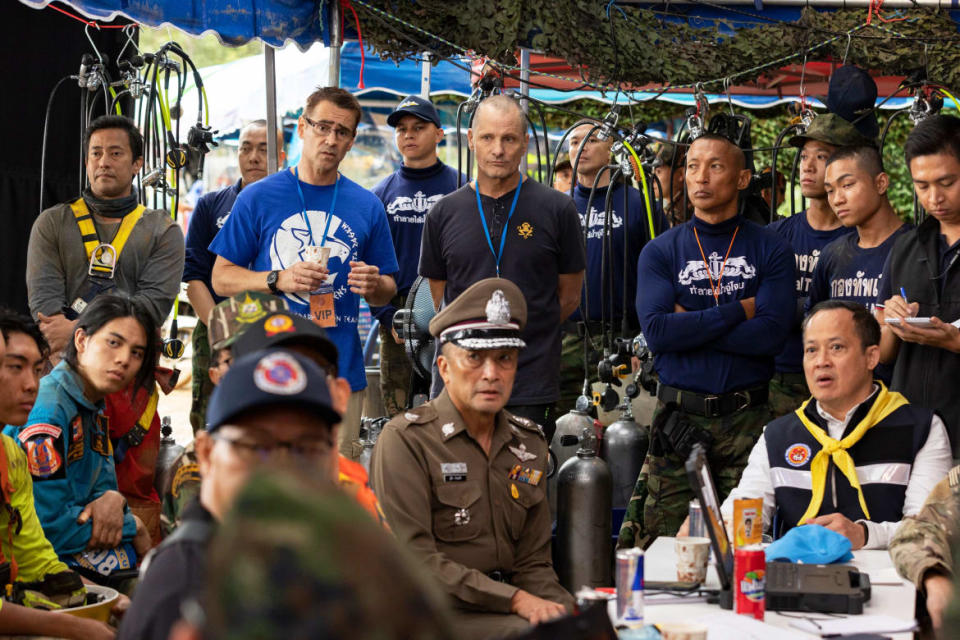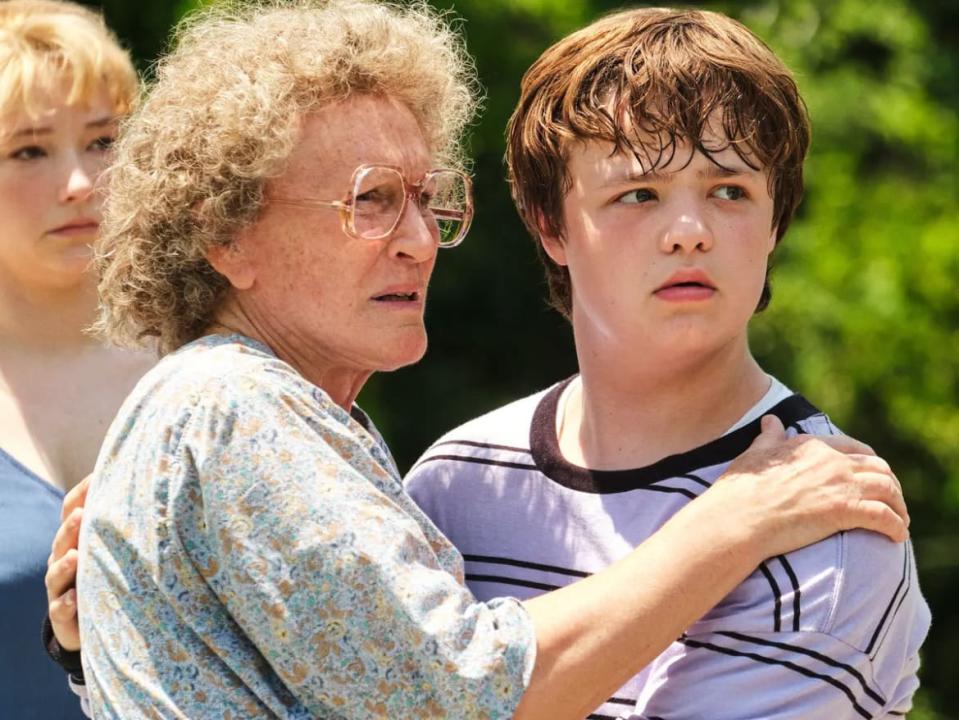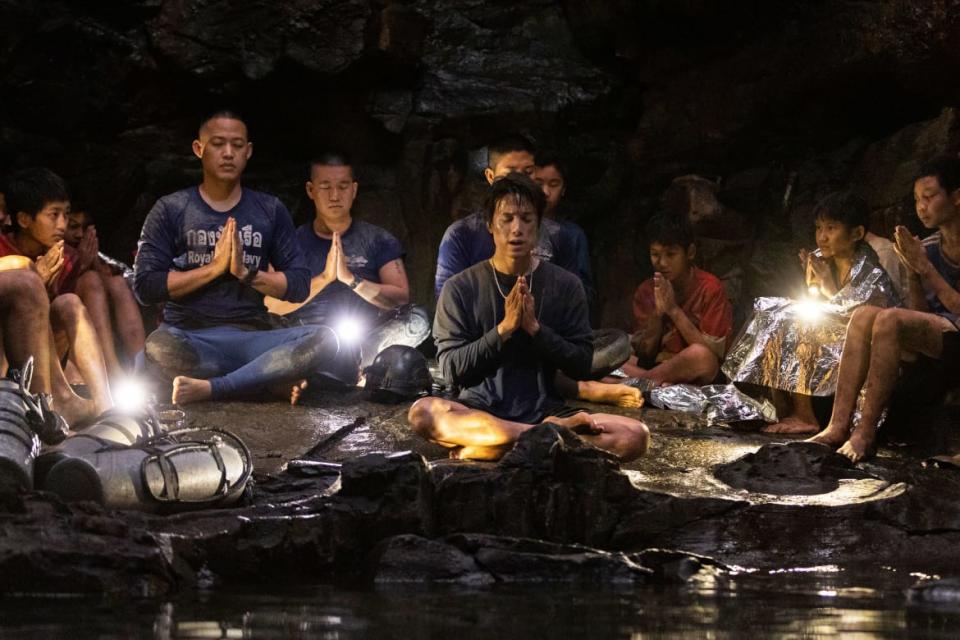Ron Howard on the Spectacular ‘Thirteen Lives’ and Why He’s Still Shocked by the ‘Hillbilly Elegy’ Backlash

- Oops!Something went wrong.Please try again later.
- Oops!Something went wrong.Please try again later.
- Oops!Something went wrong.Please try again later.
Ron Howard is debating how humble his humblebrag should be. (One would think that, once you get to be Ron Howard, you’d feel secure in some healthy boasting, but here we are.) After some starting and stopping, he goes for it: Thirteen Lives tested higher with audiences—meaning more positively—than any film he’s directed in his entire career.
“Even more than Apollo 13, Rush, and A Beautiful Mind,” he adds. “And they tested high.”
Thirteen Lives, which began streaming on Amazon in August, is in the midst of an award-season push, a familiar effort for the two-time Oscar-winning director and producer. It chronicles the harrowing story of the 2018 Thai cave rescue, in which 10,000 volunteers from all over the world rallied to save 12 boys and their soccer coach, who became trapped in a flooded cave. With the attention of the world on them, a group of elite divers worked in concert with the government and local farmers to stage what should have been impossible: the safe recovery of the entire team, after 18 excruciating days.
“It’s the combination of the visceral experience, of feeling what it’s like to be in the caves, and it transports audiences culturally, in a way that is satisfying,” Howard says, estimating what it was about Thirteen Lives that won over audiences so enthusiastically. “And then, of course, it’s just such a miraculous outcome. It’s undeniable, because we all know what happened.”
Howard is speaking to The Daily Beast’s Obsessed in Savannah, Georgia, where he is accepting the Lifetime Achievement Award in Directing at the SCAD Savannah Film Festival.
While there, he taught a master class for SCAD students, an invigorating experience he hadn’t had since 2008, in the lead-up to Frost/Nixon’s release. He can’t remember why, but the movie had been delayed, so he ended up touring with a rough cut to colleges, including NYU, UCLA, USC, Columbia, and Stanford, to screen it and conduct talkbacks with the students.
“I learned so much about the film and actually went back into the cut,” he says. “So I kind of used them like a focus group. I’ve always wanted to do that again.”
A conversation about the creation of Thirteen Lives is a conversation about learning. The film is very much a “Ron Howard film”: Based on a true story, in which the power of the human spirit rises over what should be insurmountable circumstances, under the highest stakes imaginable. But it’s also the culmination of a career spent understanding how the art of cinema, the film industry, and culture’s interaction fundamentally changes.

Thirteen Lives presented new technical challenges that thrilled a director who is six decades into a $4.3 billion-grossing career. The film stars Viggo Mortensen, Colin Farrell, and Joel Edgerton as the divers who traveled to Thailand for the rescue, but the film isn’t necessarily their hero’s story—at least not in the way it might have been if it had been made a decade ago. Thirteen Lives is a story about place, revealing the vibrant, intricate details of the people who lived in Northern Thailand, for whom this saga wasn’t a headline-making news cycle, but their lives.
During our conversation, Howard reflects on the mistakes he’s made in the past when it comes to cultural authenticity, and the scrutiny that comes with telling stories about real people. That means, of course, revisiting the intense backlash to his film Hillbilly Elegy, which was based on the memoir written by J.D. Vance, the former lawyer who is now a controversial Senate candidate, about his upbringing in Appalachia. (When it was released in Nov. 2020—a politically charged time, to say the least—the film became a lightning rod for discourse surrounding classism and the red vs. blue state divide.)
It’s a revealing insight into his process, and his evolving perspective on what his films could—and should—mean.
‘Thirteen Lives’ Is Old-School Hollywood Filmmaking at Its Finest
Did it surprise you that Thirteen Lives performed even better in test screenings than the other films you mentioned, like Apollo 13 and A Beautiful Mind?
A little bit, because I wondered whether the focus that I wanted to put on Thai culture would limit accessibility in any way. But it had the opposite effect. Which says a lot, I think. TV shows like Narcos and Squid Game and Lupin are all massive global hits. I think people have come to appreciate that kind of cultural authenticity, even in language, as part of the entertainment value, part of what transports you.
Much of the film was shot in Australia, but I heard that one of the actresses who worked on it was actually in Thailand at her family’s rice farm and volunteered in the rescue.
Yes, the woman who was the farmer who says, “For the boys…” when they agree to risk their crops to help drain the cave. She’s a rice farmer herself, and she was miles away [from the cave]. She was living in Australia now, working as a school administrator when we cast her. But she had grown up in Thailand, understood rice farming, and understood what that sacrifice was. When we were shooting, she was really moved and very emotional. I used the wider shot of her because I thought it would be a little overly sentimental to be in on her face, because she was so emotional. I thought people wouldn’t believe it.
That’s really touching.
She explained to me how much it meant to everyone and how and what the sacrifice entailed. She corroborated what I had heard, which is that they made the commitment to help without any guarantees that the government would support them. Ultimately, the government did step up and offer some support to reimburse them. But they had no promise going into that at all.
To have experienced that and then be a part of this movie must have meant a lot.
Our key actors playing the parents were actually from the north, and Northern Thailand has a different dialect. It’s pretty extreme. It was explained to me as the equivalent of a really strong Scottish brogue. Our Thai co-producers, who were there to help with the adaptation and translation, said that even in Thai cinema, that difference in dialect was ignored. And I said that I don’t think we should ignore it. I think we should go for it. So we only cast kids from the north so they could improvise in the dialect. [Teeradon “James” Supapunpinyo], who played the coach, was from Bangkok. So he had to learn the dialect. He learned to rely on some of the boys. When I wanted him to improvise something, he’d have to turn to a couple of the older boys and quickly talk to them.
Prioritizing that kind of cultural authenticity still feels like something new and a work-in-progress in Hollywood. What have you learned about the importance of that as time has gone on?
It was important to me, particularly as I thought of this as a Thai story. And here I am, an American, telling it. I was very aware not only that it would be scrutinized, but that it should be scrutinized. It should be stress-tested, in terms of the authenticity. So I felt like we should just do that, for ourselves and for the audience, ahead of time. One of the only challenges was getting the Thai actors to believe that I wanted them to speak up and provide some quality control in this area, because they are incredibly polite people.
Did that feel like a different way of running things than when you’ve worked on your past films?
You know, I made some mistakes in the early days, going back to the movie Gung Ho, where I cast a lot of Japanese American actors. They told me they could speak Japanese, but I didn’t really test it. Later, when I was actually working with actors from Japan on the film, they said, “This is not very good Japanese that’s being spoken here.” By then, we shot 90 percent of the movie, and it was too late. What a rookie mistake that was. I’ve tried never to make that mistake again.

Like you said, there is an inherent stress-test and scrutiny that follows movies based on actual events. Some of that scrutiny can be on the harsher side, like the reaction to Hillbilly Elegy and the political comments made by its subject, J.D. Vance. On the other extreme is something as high-testing as Thirteen Lives. What have you learned from weathering both extremes of reaction?
There’s an element of risk there. I mean, in reality with Hillbilly Elegy, audience reactions were good. Even people from the region, in the test audiences, understood it and appreciated it for the level of authenticity that we achieved and which we were going for. With that film, as you well know, reviewers and others were tougher on it. And they brought whatever filter they were looking at it through. The movie frustrated them in certain ways. But I was a little surprised by that, because, again, we’d gone through a similar testing process and found that people from the region were finding it to be very authentic, and very accurate, and rang true to their experiences.
So you weren’t expecting that backlash?
We were a little bit surprised by that. But it’s always nerve-racking. You reach this point where you finally have to screen the movie for people. We had to screen this for the divers. I screened [A Beautiful Mind] for John Nash and Frost/Nixon for David Frost. Oh my God, I screened Rush for Niki Lauda and a bunch of Formula 1 racers like Lewis Hamilton and Bernie Ecclestone. I had a screening of Apollo 13 for NASA in front of Jim Lovell. That was nerve-wracking. Most of these experiences have worked out very positively.
The Inside Story of Thailand’s Daring Cave Rescue
What were other major challenges shooting Thirteen Lives? Have you ever worked with this much water before?
I’ve never worked on a movie where the water was such a character. It was like the fire in Backdraft or the zero gravity in Apollo 13, where it was really a character. Cocoon had a lot of water. Splash had a lot of water. The Heart of the Sea had a lot of water. But the water wasn’t the problem. Rising floodwaters, the threat of rain, and then the actual downpour—those were all plot points. The density of the water was the real factor. The divers could see even less than we could convey in the movie.
Otherwise we wouldn’t be able to see anything.
Right. But the actors got so good at it they did all their own diving. Viggo [Mortensen] led the charge and wanted to do it all and everybody else followed.
All of them? Colin and Joel, too?
Yeah, and Weir [Sukollawat Kanarot], who played Saman, the diver who died. It was incredible. They all admitted later that there were a few precarious moments, where they were really worried, or they had minor panic attacks in places. But they never told me because they knew I was a little skeptical and concerned about them doing it all. Even though I loved it from a shotmaking standpoint, I was always concerned about it from a safety standpoint.
That’s an understandable point of view.
But it wasn’t reckless. They actually got so good that we started doing what we called “a selfie pass,” where they would dive and hold the smallest of the digital cameras in front of them. And then they’d shoot the other divers, like Colin would follow Viggo through.

I remember following every detail of the rescue when it was happening, and, when it all was over, my mind was blown by the miraculous nature of it all. But it’s a different experience to see it dramatized. I read about the rescue mission and how they transported the kids out. But watching them sedate the boys and bring them underwater was visceral and upsetting in a whole new way.
Let me tell you, the first time we tested that with a stunt person… We wanted them to just show us the procedure. It was about a week before we started shooting. We just looked at it, and I almost wanted to weep. Just watching each step and the risk. And this was a stunt person that they were practicing on! After that first test, I said that we just have to show this in detail. This is mind-blowing.
When you’ve done so many movies like this about the triumph of the human spirit—these miracles, really—does that imprint on you in any way?
It does. And I’m always very aware that every story is a cautionary tale. I’m choosing the stories where the threat was somehow overcome. The reason I like doing the true stories is because it does remind us that it’s possible. I’m also acutely aware that these are the outlier events. This is proof that it’s possible, but it doesn’t mean it’s normal. It doesn’t mean you can rely upon it. None of it can happen without supreme effort. None of it is ever blind luck. The tragedies are when you do the cautionary tale, and you recognize that the outcome wasn’t achievable. That’s another kind of story, and I haven’t done many of those. But I think it’s incredibly valid to choose the stories where it does work out, just so we can just keep reminding ourselves that it’s worth the effort.
Get the Daily Beast's biggest scoops and scandals delivered right to your inbox. Sign up now.
Stay informed and gain unlimited access to the Daily Beast's unmatched reporting. Subscribe now.

